Helter Skelter
The hype industry is truly remarkable. A well-oiled, global, distributed machine that feeds millions of families worldwide. The beauty of the hype engine lies in its reasonable simplicity, considering the billions it generates year over year.
The necessary initial spark of the fire is one of the big consultancy behemoths of the world, the eternal intellectualizers of business—most frequently McKinsey—equipped with the right outreach and reputation, accompanied with the polished design capabilities and the distribution power, identifying a new technological trend. Said trend needs to fulfill a few attributes:
It must be vague, early and undefined enough to avoid making its visible lack of evidence and solid metrics suspicious.
It must sound plausible and be easily framed as beneficial for our lives (as opposed to any technology that can be quickly related to war, death or destruction)
It must be capable of hosting an obscure breadth of terms and complex inner workings that are difficult to grasp for the layperson. A layperson who will—ironically enough—most likely want to invest in it down the road. Clueless investors+obscure investments that promise unrealistic panaceas; huh, isn’t that a Ponzi scheme? You said it, not me.
If such conditions are met, eureka; the “hype initiators” will kickstart the machinery and go create “reports” and articles galore which will showcase the potential of said new technology, giving way to the meteoric rising part of the cycle. By the way, don’t you love the irony that the “hype cycle” term was coined by one of the firms who made fortunes by milking it like there was no tomorrow? It’s like a thief publishing in Wikipedia its method for robbing banks. Only on this crazy planet.
Examples of what the consultancy firms have been making us believe as the new tech blockbusters (this is for the last decade or so, and many of them overlap):
Experience Curve (1970s)
Semantic Web (late 1990s)
Big data (2007-2011)
IoT and the “Industry 4.0” (2011-2015)
Blockchain (2015-2018)
NewSpace (2014-2021)
Quantum computing (2018-2020)
Artificial Intelligence (2020-present, although AI is a wild card they have been playing for the last 25 years or so)
The Metaverse (2020-present)
Clever hypemakers will not stay in any of those isolatedly but connect these technologies together for augmentation purposes. Nothing like an AI-powered, blockchain smallsat constellation leveraging quantum computers for controlling distributed IoT sensors. Note to self: I should be pitching this. See the Prime Minister of India agreeing with me to the fullest (btw, well said Mr. Modi, I couldn’t have been more concise):
And see some beautiful pieces written on all these topics:
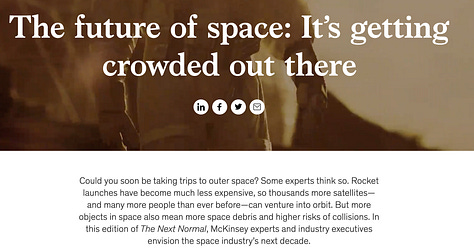
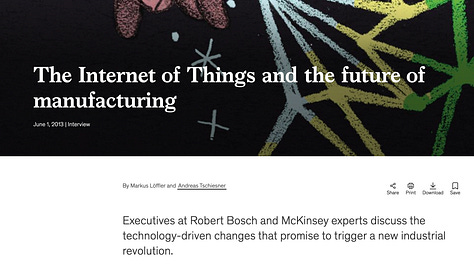
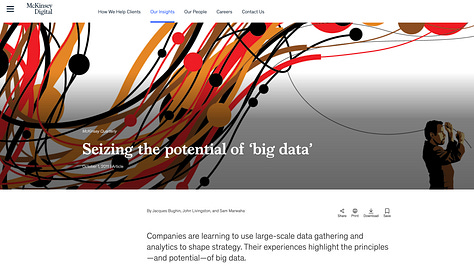


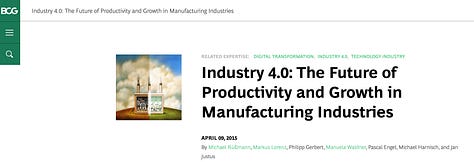

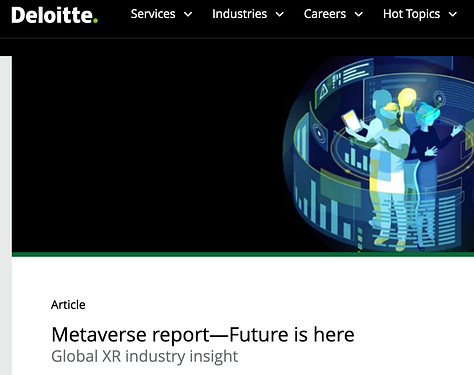
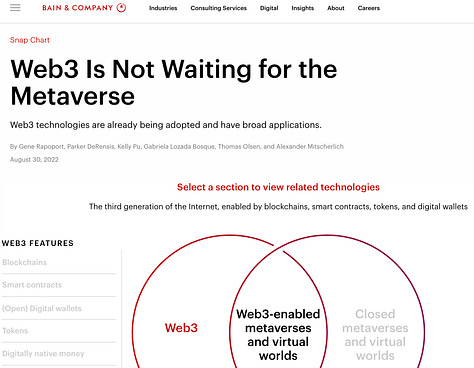
Let’s now observe the different fundamental parts of the hype mechanism:
A good amount of articles must be published in renowned outlets, such as the Harvard Business Review123, Business Insider, or any other specialized media4. With the wheel spinning at full speed, news starts to go around. The smaller fish in the pond—who are subscribers to those news outlets—start to consume the thick smoke. They go: huh, the “big guys” appear to be talking about X, so X must be interesting, so who cares if it is gonna happen or not, let’s jump into their boat! Otherwise a paralyzing fear of missing out creeps on them. So, the smaller ones start to parrot the noise, disseminating inflated numbers of ghost markets.
Spurious reports filled with made-up market sizes and predicted growth rates proliferate. Forecasts are all around the place, and the numbers are too good to look away.
Early entrepreneurs see the edge and start pitching. No product, and no idea if the technology is feasible or not, but the vision is big. Revolutionize, democratize this and that. I tried to ride the IoT hype back in 2015 with hilarious results, which are partially described in the forecasting article referred above. And you may say I am riding the NewSpace hype and you would not be far off.
Venture capitalists with good connections with the consultants meet the bold entrepreneurs, hands are shaken, deals are closed. The new tech is now getting serious, come on, az16z, Sequoia are funding it. Still no product, but that does not matter; it never did.
Of course, as time goes by, forecasts prove to be inflated, and as the Gartner cycle shows, disappointment grows as the tidal waves of hype start to wash out, leaving many to be observed swimming naked. Majority of the visionary companies go belly up or, if clever enough, low-key pivot to something else to keep existing.
But fear not, McKinsey is surely already having the next one under the sleeve, and the real question is: where are you going to be when the next game changing, democratizing, revolutionary technology kicks in?
When I get to the bottom
I go back to the top of the slide
Where I stop and I turn and I go for a ride
'Til I get to the bottom and I see you again
Yeah, yeah, yeah, ha-ha-ha!
Well you may be a hyper, but you ain't no dancer.
For a nauseous article on how management can benefit from big data, see this: https://hbr.org/2012/10/big-data-the-management-revolution
For a hilarious article of a guy who runs his family following Agile practices, see this at your own risk: https://hbr.org/2020/06/the-agile-family-meeting
Bit off-topic, but this one is a cringe-maker: https://web.archive.org/web/20221109025610/https:/www.sequoiacap.com/article/sam-bankman-fried-spotlight/
